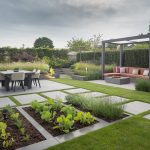Creating a beautiful garden at home doesn’t require a lot of space or resources, just a bit of creativity and effort. Whether you have a large backyard or a small balcony, these garden ideas can help transform your outdoor area into a peaceful retreat. Here are ten essential garden ideas for every home that will enhance the aesthetics and functionality of your garden.
1. Create a Cozy Outdoor Lounge Space
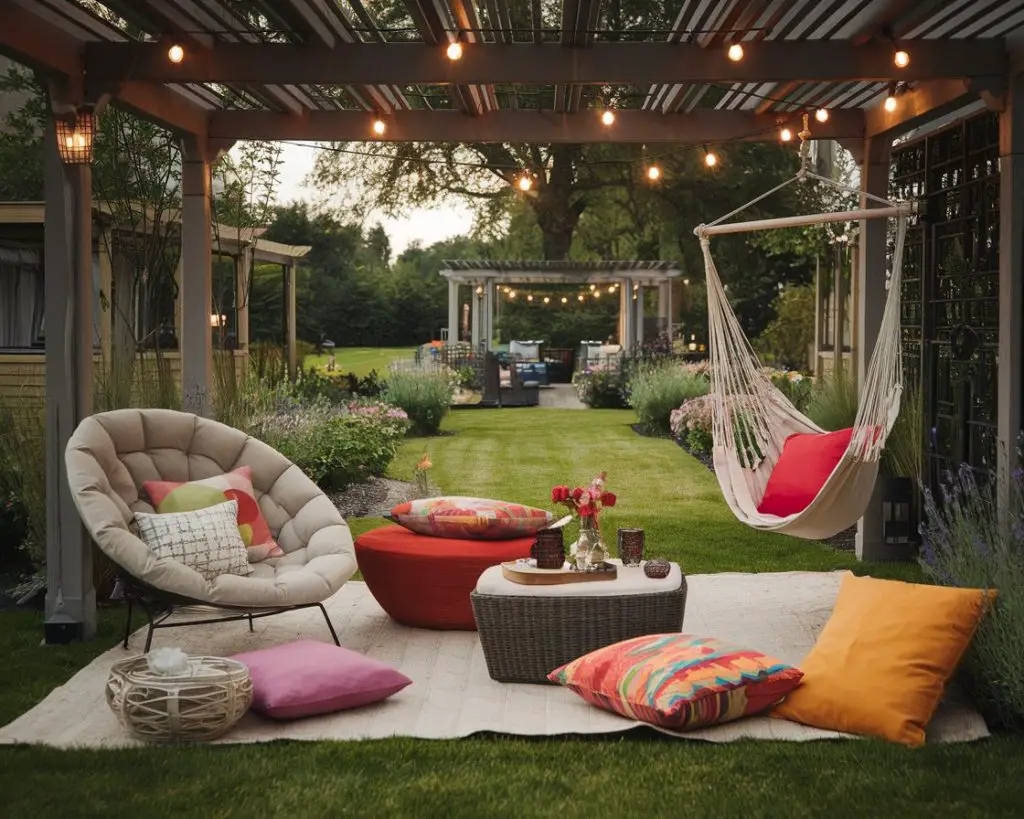
A cozy outdoor lounge space can turn your garden into a relaxing retreat. Begin by selecting comfortable furniture like cushioned chairs or a hammock. Add some outdoor pillows for comfort, and choose a shade-providing structure, like a pergola or an umbrella, to protect from the sun.
To make your lounge more inviting, incorporate some soft lighting, such as string lights or lanterns. The ambiance created by soft lighting will allow you to enjoy your outdoor space even after the sun goes down. You can also add some potted plants around the seating area for a touch of greenery.
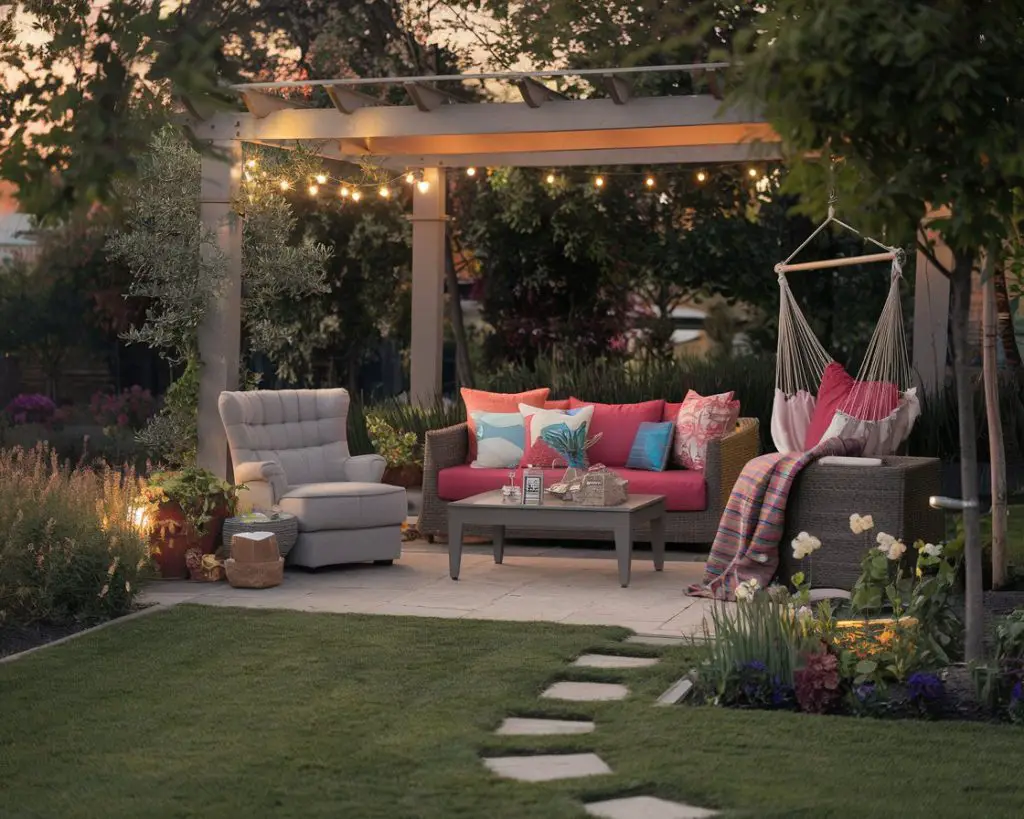
Consider integrating elements like a small outdoor rug or a throw blanket to increase comfort and style. This cozy corner will provide a serene environment for reading, enjoying a drink, or simply relaxing amidst nature.
2. Incorporate Raised Garden Beds for Easy Gardening
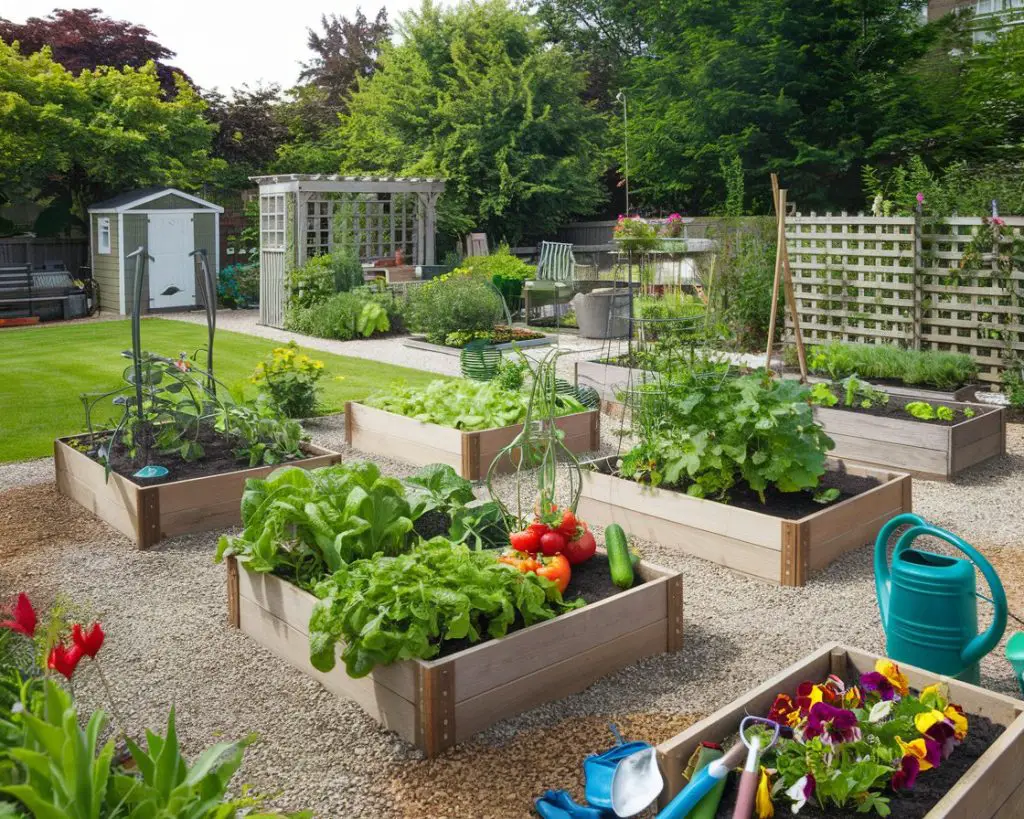
Raised garden beds are perfect for both beginners and experienced gardeners. They help to prevent soil compaction, offer better drainage, and keep weeds under control. Raised beds allow for the cultivation of vegetables, herbs, and flowers without needing to bend down or strain your back.
These beds can be made from various materials such as wood, stone, or recycled materials, giving you flexibility in design. You can tailor the size of the bed based on your available space and the plants you want to grow. Raised beds are ideal for small gardens or those with poor soil quality.
For those with limited space, vertical raised beds or stacked planters are great alternatives. You can also add mulch to retain moisture and keep the soil temperature stable, ensuring your plants thrive.
3. Use Vertical Gardening for Limited Space
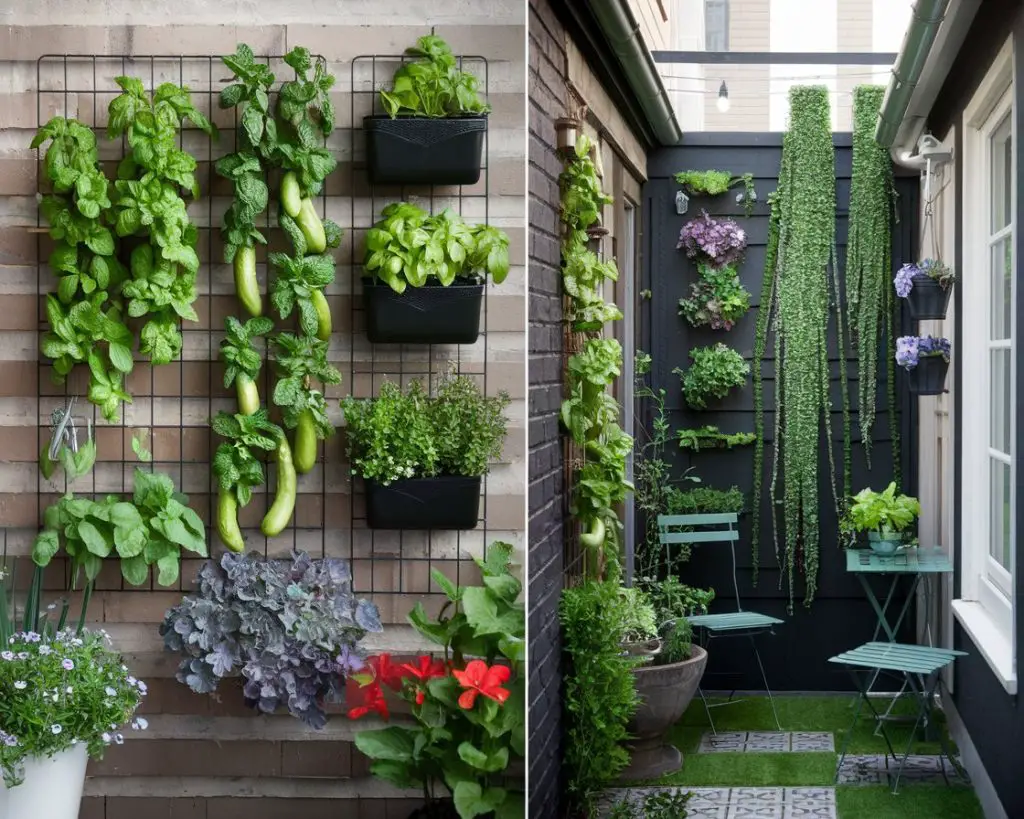
Vertical gardening is a fantastic option for homes with limited space. By using walls, fences, and other structures, you can grow climbing plants, herbs, and even vegetables without taking up valuable floor space. Trellises, plant racks, and hanging baskets are all great tools to incorporate in vertical gardening.
Planting vining plants like tomatoes, cucumbers, or peas on a trellis allows you to grow food without needing much horizontal space. Similarly, herbs like basil, mint, or thyme can thrive in wall-mounted planters or hanging pots. These spaces can also act as a green wall, adding privacy and beauty.
Vertical gardens can also help maximize sunlight exposure for plants. Position your vertical planters or structures to ensure your plants receive adequate light throughout the day, fostering healthy growth in compact spaces.
4. Incorporate Water Features for Tranquil Ambiance
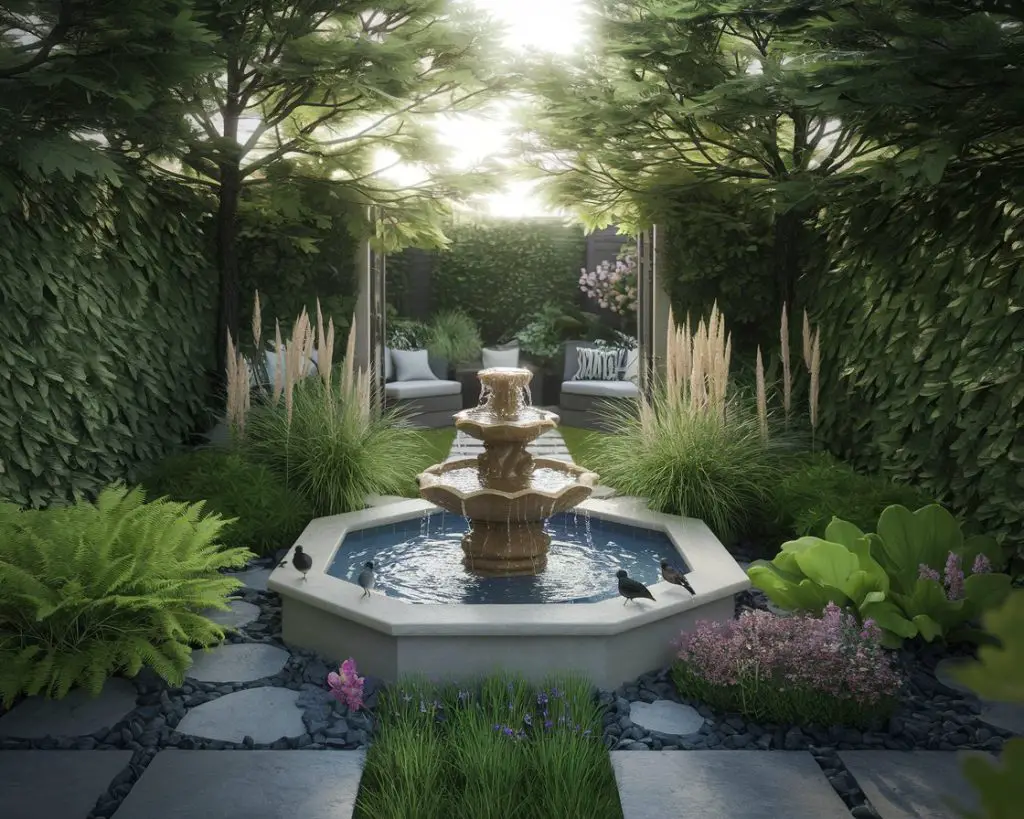
Adding a water feature, such as a small pond, fountain, or birdbath, can elevate your garden by creating a tranquil atmosphere. The sound of flowing water brings a sense of calm and relaxation to any outdoor space. Choose a water feature that suits the size and style of your garden.
For a small garden, a tabletop fountain or a birdbath can still create a peaceful ambiance without overwhelming the space. If you have more room, consider installing a pond with fish or aquatic plants, which will also attract wildlife to your garden, enhancing its ecosystem.
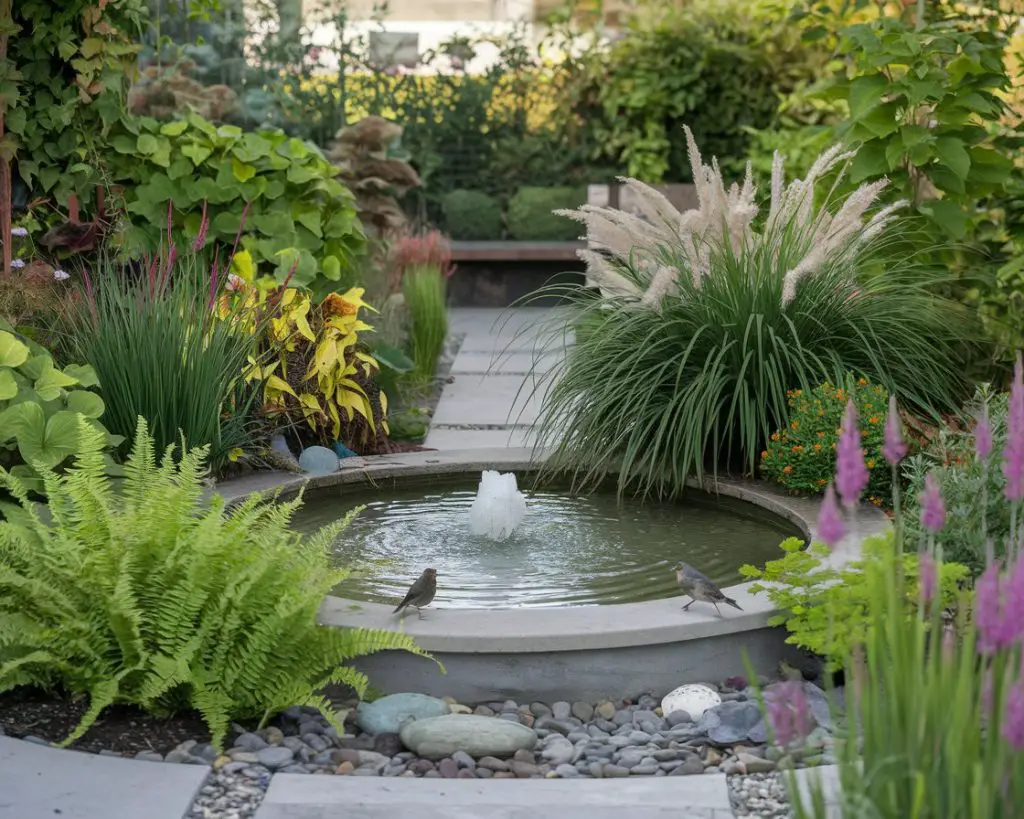
Maintaining a water feature involves ensuring clean water and proper filtration. However, the effort is well worth the calming presence a water feature brings to your garden, making it an ideal spot for meditation or reflection.
5. Plant a Colorful Flower Garden

A flower garden can add vibrancy and beauty to any home. Choose a variety of flowers that bloom at different times of the year to ensure year-round color. Opt for native plants, as they tend to be more resilient and require less maintenance. Group flowers based on their color, size, or type for a visually appealing arrangement.
Consider planting flowers with varying heights to create depth in your garden. Tall sunflowers or hollyhocks can serve as the backdrop, while shorter flowers like pansies or marigolds can fill the foreground. Mixing annuals and perennials will also give your garden long-lasting color and variety.
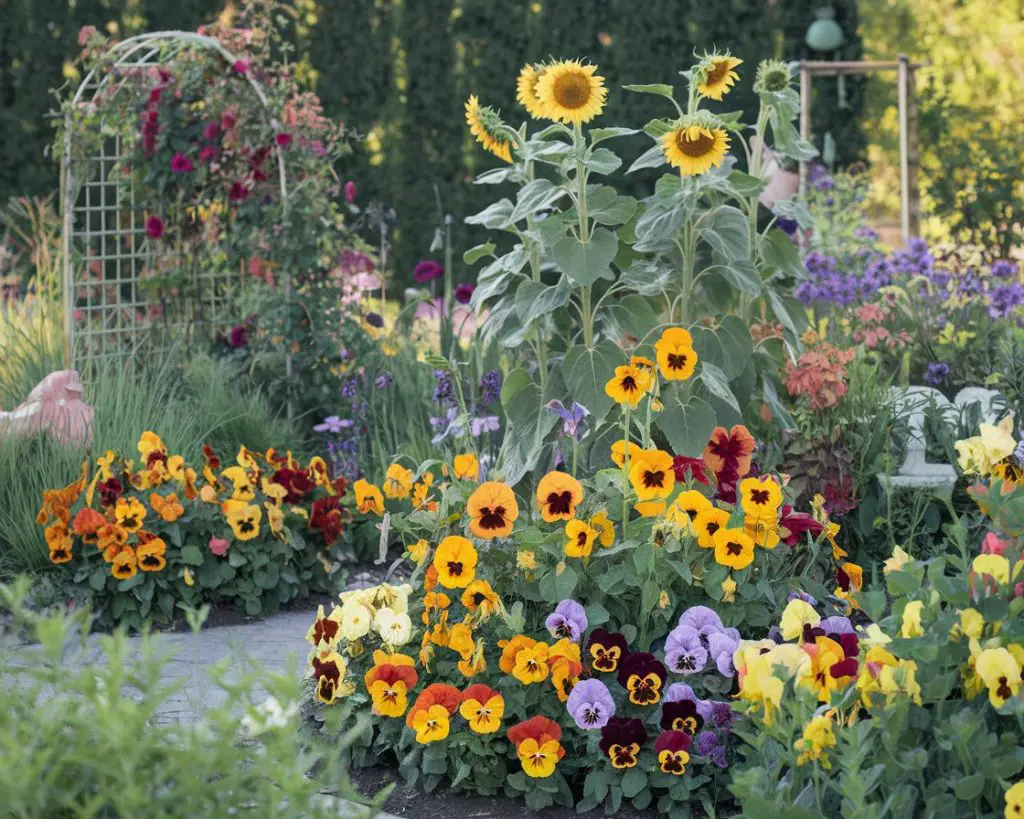
To care for your flower garden, regularly deadhead spent flowers to encourage new blooms. Make sure to water the flowers consistently, especially during dry spells, and apply mulch to help retain moisture and suppress weeds.
6. Start a Vegetable Garden for Fresh Produce

A vegetable garden not only provides fresh, healthy produce but also offers a rewarding gardening experience. Choose vegetables that grow well in your local climate and start small, especially if you’re a beginner. Tomatoes, cucumbers, and peppers are popular choices for beginner vegetable gardeners.
To optimize your vegetable garden, ensure it receives plenty of sunlight and use nutrient-rich soil to support plant growth. Raised beds or containers can be beneficial for those with limited space or poor soil conditions. Consider companion planting to naturally deter pests and promote healthy growth.
Harvesting your own vegetables is a deeply satisfying experience. It allows you to enjoy fresh, home-grown produce in your meals, while also promoting sustainability by reducing your reliance on store-bought goods.
7. Create a Butterfly and Bee Garden

A butterfly and bee garden can help support local wildlife while adding beauty to your outdoor space. Plant nectar-rich flowers such as lavender, marigold, and echinacea to attract butterflies and bees. These pollinators are essential for the health of your garden, as they help with the fertilization of plants.
In addition to flowering plants, consider adding native grasses and shrubs that provide shelter for butterflies and bees. Avoid using pesticides in your garden, as they can harm these beneficial creatures. The presence of pollinators will also improve the overall health of your garden.
A butterfly and bee garden is not only beautiful but also an educational experience for children and adults alike. Watching these pollinators visit your plants can help increase awareness of the importance of biodiversity and environmental conservation.
8. Add an Herb Garden for Culinary Use

An herb garden is an easy and rewarding addition to any home garden. Fresh herbs such as basil, rosemary, thyme, and mint are versatile and can be used in cooking, teas, and even for medicinal purposes. Plant herbs in containers, raised beds, or directly in the ground depending on the space available.
Growing your own herbs allows you to have fresh, organic flavors at your fingertips whenever you need them. Herbs like cilantro, parsley, and dill can add zest to everyday meals, while aromatic herbs like lavender and sage can provide a pleasant fragrance to your garden.

Herb gardens are easy to maintain, and many herbs thrive in sunny spots with well-draining soil. Watering them regularly and trimming them to encourage growth will ensure a continuous supply of fresh herbs throughout the season.
9. Install Pathways to Define Your Garden’s Layout

Pathways can help define the layout of your garden while making it easier to navigate. Gravel, stepping stones, or wooden planks can create attractive walkways that lead visitors through different sections of your garden. Consider using materials that complement the overall style of your garden.
A well-designed pathway can serve both functional and aesthetic purposes. It can guide people to key areas such as seating spaces, water features, or vegetable gardens, while also preventing foot traffic from damaging delicate plants. Pathways also add structure and visual interest to your garden.

When planning your pathway, keep in mind the overall flow of your garden. Curved paths can create a sense of mystery, while straight paths provide a more formal feel. Make sure the path is wide enough for easy movement and is made from materials that are durable and low-maintenance.
10. Incorporate Outdoor Lighting to Highlight Key Features

Outdoor lighting not only enhances the beauty of your garden after dark but also increases safety by illuminating pathways and steps. String lights, lanterns, or spotlights can be used to highlight features such as trees, sculptures, or water features. Lighting adds ambiance and allows you to enjoy your garden during the evening hours.
Consider using solar-powered lights to reduce energy consumption and make installation easier. Solar lights are easy to place and require no wiring, making them ideal for garden areas without access to electrical outlets. They also provide a soft glow that complements the natural surroundings.
When planning outdoor lighting, think about the areas you want to emphasize and the overall mood you want to create. Warm white lights are ideal for creating a cozy, inviting atmosphere, while cooler tones can add a more modern or dramatic touch to your garden.
These 10 essential garden ideas are designed to help you create a space that is not only beautiful but also functional and enjoyable. Whether you have a large backyard or a small balcony, these ideas can be adapted to fit any space.

I am a graduate of Bangladesh Agricultural University, where I delved into various agricultural disciplines, equipping me with a profound understanding of agriculture. Beyond academics, I have hands-on experience in gardening and crop cultivation. My passion is to embrace sustainable farming and horticulture. With a BSc in Agriculture, I am dedicated to promoting environmentally conscious and efficient agrarian practices.
Bachelor of Science (BSc) in Agriculture (Hons.)
Master of Science. (Sustainable Agriculture & Food Security ) (MS)
Bangladesh Agricultural University



